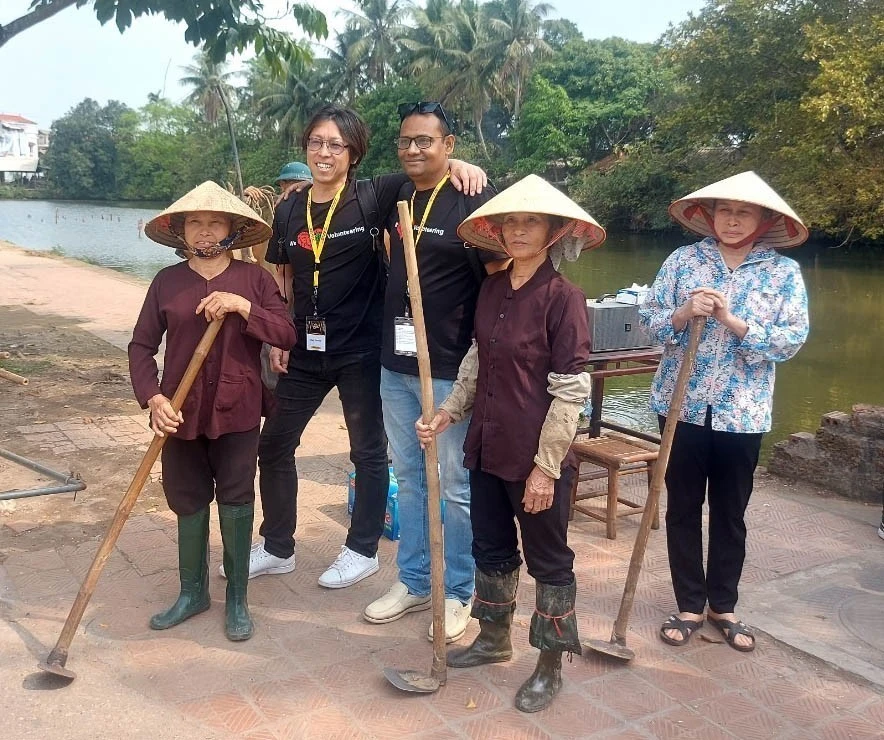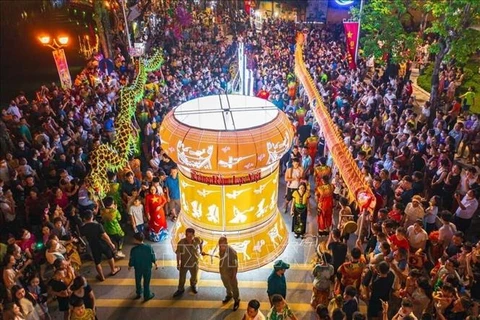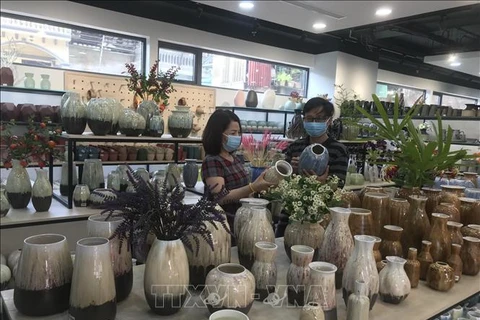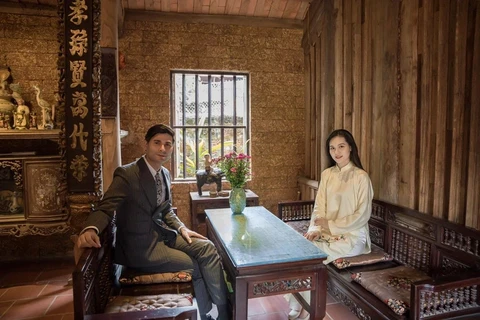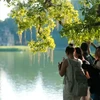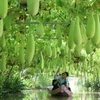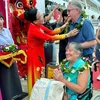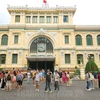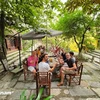Hanoi (VNA) – Duong Lam ancient village in the town of Son Tay on the outskirts of Hanoi, once renowned for its architectural charm and culinary traditions, has become a magnet for foreign visitors as it offers an authentic farm experience.
Along with touring the village for a glimpse into the rich tapestry of local cultural heritage, visitors have found it fascinating to try its staples and learn of the rigors of its agricultural practices.
Head of the Duong Lam Ancient Village Relics Management Board Nguyen Dang Thao said with a view to boosting sustainable tourism development, the board has worked to build a multitude of offerings, in which visitors could gain unique experiences such as making candies, cakes and fermented soybean paste, and engaging in agricultural practices.
International visitors take to the farm experience, as do students from internationals schools in Hanoi, he said, adding that farmers guide the tourists on how to plough and grow crops.
With a two-day one-night trip in Duong Lam, visitors have the opportunity to indulge themselves in the village’s heritage in the morning, prepare and taste traditional food in the afternoon, join in cultural activities in the evening, and explore a local bustling market the next morning, he said.
Last month, a delegation of 46 foreign tourists from Australia, Japan, Malaysia and Singapore visited Duong Lam and experienced a day as a local farmer. They said as they were curious about Duong Lam, which was honoured for the ASEAN 2024 Sustainable Tourism Product Award earlier this year. The international group got a chance to try ploughing and rice planting.
Thao said the village has hosted 30 delegations of foreign visitors from the outset of the year, and the number of bookings is expected to surge in the time to come.
In the past, visitors often opted for short day trips since there were not many overnight accommodations available. However, these days many local families have opened their doors to strangers for an authentic home-stay experience.
An overnight stay is exactly what people need to fully enjoy what the village has to offer. They can spend the day working with farmers, or listening to traditional musical performances by the village’s artisans.
All of these make up an ideal tourism product, bringing in financial stability and helping the village preserve itself as a pearl in Vietnam’s unique culture.
Just 44km away from Hanoi’s centre, the village boasts typical features of a rural village in the Red River Delta with giant banyan trees, freshwater wells, a communal house, along with 956 old houses dating back 100 - 400 years.
In 2006, it became the first ancient village in Vietnam to be recognised as a national historical and cultural relic site.
In 2018 - 2019, before the COVID-19 pandemic broke out, it attracted few visitors, only about 50,000 - 60,000 tourists a year. Last year, the village welcomed about 650,000 visitors - the highest so far./.

